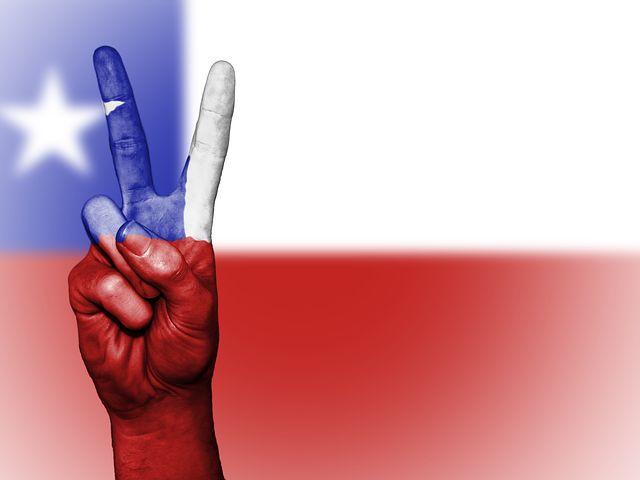The past ten days in Chile have been marked by protests and demonstrations that culminated in a historic march against inequality. The protests and demonstrations originally began over a four-cent increase in metro fares (which is no longer in place).[1] However, the movement grew substantially and took on issues of living costs, education, health care, and inequality that have plagued Chile for years. Also, the protestors are calling for the resignation of their president, Sebastian Piñera, who has failed to keep his 2017 presidential campaign promise of reducing inequality.[2] Unfortunately, as the movement grew in Chile, so did the violence. In fact, in response to the widespread civilian unrest, President Piñera deployed army troops, implemented a mandatory curfew, and declared a state of emergency.[3] Overall, the anti-inequality protests have resulted in seventeen deaths and hundreds of injuries.[4] The United Nations announced that it will be sending a team to Chile this week to investigate and evaluate allegations of human rights abuses against the protestors.[5]
In order to understand why the seemingly peaceful country of Chile has erupted into violent protests, it is essential to evaluate the paradoxical nature of Chile’s economy. On the one hand, Chile is one of the wealthiest countries in South America. Chile has the highest GDP per capita in South America and is the thirtieth most competitive country in the world.[6] On the other hand, it is one of the most unequal countries in South America.[7] In fact, Chile has the highest level of income inequality out of all 36 nations in the Organization for Economic Co-operation and Development (OECD).[8] Compared to all members of the OECD (which includes the U.S., Canada, Australia, Israel, Mexico, Turkey, and etc.), Chile has an income gap 65% wider than the average.[9] According to a study in 2018, the income of the richest people in Chile is thirteen times greater than the income of the poorest members of Chile’s society.[10] Despite the fact that Chile has a robust middle class, they feel that they cannot afford the goods and services necessary to compete in the economy.[11] The average monthly income of Chilean workers is approximately $550.[12] This contradiction in Chile of a prosperous nation plagued with inequality has led to mass frustration that are evident in the recent calls for reform.
On October 25, the activists in Chile had a remarkable peaceful protest that spurred, or perhaps forced, President Piñera to take steps towards meaningful change.[13] During the march in the nation’s capital Santiago, at least a million people participated (more than 5% of the country’s entire population) and demanded equality.[14] Furthermore, protestors in all other major Chilean cities took to the streets and called for reform as well as the resignation of President Piñera. In total, it was the biggest demonstration in Chile since the restoration of its democracy in 1990.[15] In response to the peaceful march, on October 27 President Piñera called for the resignation of his entire cabinet. He announced that he is working to form a new government that will create social reforms to meet the demands of the protestors.[16] Also, President Piñera announced a package of reforms which included raising pensions and the minimum wage.[17] The President has lifted the mandatory curfew in many cities across Chile and said that the state of emergency will end today, October 28.[18]
Undoubtedly, this is a monumental step for the nation. Yet, there are still many looming questions as to if, and how further social and economic reforms will be implemented. Will President Piñera step down and allow an entirely new government the opportunity to meet the demands of the protestors, or will he take further steps to reduce inequality? If he decides to move forward with reducing inequality, what steps will he take? Despite the success of the protestors in influencing President Piñera, many are still calling for his resignation and claim that his efforts so far are not substantial enough. In fact, although President Piñera has voiced his willingness to enact change, unless his actions legitimately reflect his words he should be removed as president.
The protests in Chile connect to the theme discussed in class regarding the influence of social media on political protests. Initially, the protests began in Chile as a social media campaign created by middle school students who called on Chileans to jump subway turnstiles in order to show disapproval of increased fare prices.[19] Over a short period of time, this social media campaign sparked the movement seen in Chile today. As evidenced in the film “How Facebook Changed the World: The Arab Spring”, social media is a mobilization tool that can not only bring people together but can also diffuse messages throughout the globe.
Moreover, it appears as if there is a domino effect in regard to public protests around the world. As the world becomes increasingly interconnected, it is inevitable that situations occurring in one country will penetrate and perhaps influence the socio-political landscape of other countries. Specifically, recent protests have occurred, or are still occurring, in Hong Kong, the Netherlands, Haiti, Peru, Zimbabwe, Ecuador, and many other nations. Evidently, the use of public protests is currently a very popular means of expressing disapproval and the desire for change. Notably, this could be due to the diffusion of protest styles through the use of social media.
The future of Chile is difficult to predict. Many questions remain as to what will happen next and if the protests will spark meaningful change. Nonetheless, as a result of the anti-inequality movement, the facade of Chile as a prosperous and peaceful nation has been shattered. As of today, President Piñera has offered a glimmer of hope for reducing inequality in Chile. Nonetheless, there is no guarantee that he will not disappoint the people of Chile once again. Therefore, if President Piñera fails to implement reforms and truly change the focus of his presidency in the near future, it will become absolutely necessary to replace him with a candidate that understands and values the demands of equality from the people.
Works Cited
BBC News. “Chile Protests: President sacks whole cabinet after protests,” October 27, 2019. https://www.bbc.com/news/world-latin-america-50197673.
Laing, Aislinn, Sherwood, Dave, and Cambero, Fabian. “Explainer: Chile’s inequality challenge: What went wrong and can it be fixed?” Reuters. October 23, 2019. https://www.reuters.com/article/us-chile-protests-explainer/explainer-chiles-inequality-challenge-what-went-wrong-and-can-it-be-fixed-idUSKBN1X22RK.
Larsson, Naomi. “Chile unrest: ‘These protests will last until Pinera resigns.” Al Jazeera. October 25, 2019. https://www.aljazeera.com/news/2019/10/chile-unrest-protests-pinera-resigns-191025163738785.html.
Oishimaya, Sen Nag. “The Richest Countries in South America.” WorldAtlas. Oct. 23, 2019. worldatlas.com/articles/the-richest-countries-in-south-america.html.
Pablete, Jorge. “Middle School students started a movement that has paralyzed Chile’s capital.” Los Angeles Times. October 19, 2019. https://www.latimes.com/world-nation/story/2019-10-19/protests-paralyze-chile-capital.
Shrager, Allison. “Chile may be the economic star of Latin America, but its protests show that’s not enough.” Quartz. October 25, 2019. https://qz.com/1733492/chiles-protests-show-economic-growth-is-not-enough/.
Wamsley, Laurel. “Chile’s President Promises to Reshuffle Cabinet After Massive Protests in Santiago.” NPR. October 27, 2019. https://www.npr.org/2019/10/27/773884890/chiles-president-promises-to-reshuffle-cabinet-after-massive-protests-in- santiag.
[1] Laurel Wamsley. “Chile’s President Promises to Reshuffle Cabinet After Massive Protests in Santiago,” NPR. October 27, 2019. https://www.npr.org/2019/10/27/773884890/chiles-president-promises-to-reshuffle-cabinet-after-massive-protests-in-santiag.
[2] BBC News. “Chile Protests: President sacks whole cabinet after protests,” October 27, 2019. https://www.bbc.com/news/world-latin-america-50197673.
[3] Naomi Larsson. “Chile unrest: ‘These protests will last until Pinera resigns,” Al Jazeera. October 25, 2019. https://www.aljazeera.com/news/2019/10/chile-unrest-protests-pinera-resigns-191025163738785.html.
[4] BBC News. “Chile Protests: President sacks whole cabinet after protests”
[5] Naomi Larsson. “Chile unrest: ‘These protests will last until Pinera resigns,” Al Jazeera.
[6] Sen Nag, Oishimaya. “The Richest Countries in South America,” WorldAtlas. Oct. 23, 2019. worldatlas.com/articles/the-richest-countries-in-south-america.html.
[7] Id.
[8] Id.
[9] Aislinn Laing, Dave Sherwood, and Fabian Cambero. “Explainer: Chile’s inequality challenge: What went wrong and can it be fixed?” Reuters. October 23, 2019. https://www.reuters.com/article/us-chile-protests-explainer/explainer-chiles-inequality-challenge-what-went-wrong-and-can-it-be-fixed-idUSKBN1X22RK.
[10] Id.
[11] Allison Shrager. “Chile may be the economic star of Latin America but its protests show that’s not enough,” Quartz. October 25, 2019. https://qz.com/1733492/chiles-protests-show-economic-growth-is-not-enough/.
[12] Aislinn Laing, Dave Sherwood, and Fabian Cambero. “Explainer: Chile’s inequality challenge: What went wrong and can it be fixed?” Reuters.
[13] BBC News. “Chile Protests: President sacks whole cabinet after protests”
[14] Id.
[15] Id.
[16] Id.
[17] Id.
[18] Laurel Wamsley. “Chile’s President Promises to Reshuffle Cabinet After Massive Protests in Santiago,” NPR.
[19] Jorge Pablete. “Middle School students started a movement that has paralyzed Chile’s capital,” Los Angeles Times. October 19, 2019. https://www.latimes.com/world-nation/story/2019-10-19/protests-paralyze-chile-capital


I really enjoyed this article. I had no idea Chile had such a large problem with wealth inequality. It is incredible that Chile has the highest GDP per capita in South America while having the highest level of income inequality in all of the OECD. I am amazed that over a million people and more than 5% of Chile’s population marched on the capital for the cause of equality. It seems President Piñero is desperately clinging to power by choosing not to resign himself, but to fire his entire cabinet. I agree with you that we must be skeptical of Piñero’s promises to reform. It is very possible Piñero is only trying to appease the protesters and retain power. I believe Piñero will only step down if the protesters give him no choice. If Piñero follows through with his promised reforms, including raising the minimum wage and increasing pensions, along with forming a new government, he could reduce inequality. It is fascinating that such a large protest could have been started on social media by middle school students upset with increased subway fares. It is evidence that small protests on social media transform into nationwide demonstrations. I agree with you that Piñero should remain on thin ice before he can move past his promises and enact real change through legislation.